Ditch the Spanish Translator Apps – They Inhibit Learning!
Important Note: this article focuses on Spanish translator apps because I’m a Spanish teacher and my business specializes in teaching Spanish for Specific Purposes. However, the principles below apply to any language classroom.
The days of lugging around a bulky dictionary to your language class are definitely over – we’ve entered the age of BYOD (bring your own device) and tablets available to the language classroom.
This is an amazing development of course; there is so much you can do with a device that weighs less than a pound and that you’re already carrying with you anyway. But a heavy word of caution…
Don’t fool yourself that Spanish Translator apps are actually helping you (or your students) learn Spanish.
Why do students like Spanish translator apps?
We live in a world where we can get information fast and easy. For example, if your mobile device has a 3G connection, you’re already feeling like it’s slow because 4G exists and it’s “x” times faster. There is very little that we have to wait for – most of the answers to our day-to-day questions are at our fingertips. The problem with learning Spanish in today’s world is that there is nothing fast or easy about it. We’ve been told that language learning can be fast & easy by the marketing departments of language software learning systems and we never second guess it. Why would we – this is the world we live in. We can do everything else fast and easy, why not learn Spanish fast and easy?
Learning Spanish isn’t (and probably never will be) fast and easy. It can be fast, but it will be intense, difficult, and sometimes frustrating. The perfect example of learning a language fast is participating in a Spanish immersion program. You learn Spanish fast, but it’s far from easy. Learning Spanish can be easy, but if you’re going to go the easy route it will take you some time. This is classic Natural Approach to language learning, and it takes significant time! This approach is modeled after how a child learns a language; through comprehensible input, a low pressure atmosphere and guided practice you can speak a language. However, like the child, this takes a lot of contact hours with the language before you are proficient.
Students like Spanish translator apps because they provide answers and communication right now; fast and easy. The problem is that there’s no real learning happening. There IS a false goal being achieved, but learning to speak Spanish isn’t happening.
At the end of the day, students mistake a false performance goal (communication now) for the true performance objective which is learning to communicate spontaneously on their own.
How do Spanish translator apps interrupt learning?
I primarily teach Spanish for healthcare workers who want to improve communication with their patients. I love teaching these medical Spanish classes because everyone is intrinsically motivated and there are basically zero classroom management issues that used to plague me when I taught elementary and middle school Spanish. However, I’m always reminding my students not to use these Spanish translator apps. Little by little the message is catching on, but many of my students continue to mistakenly emphasize the immediate communication goal instead of emphasizing the overall objective – Spanish proficiency.
Every educator knows that you have to think in order to learn. The core problem with Spanish translator apps is that they don’t require you to think; and therefore, you don’t learn.
The biggest issue is that when we transitioned from using a traditional dictionary to an electronic one, we also transitioned from looking up single words to looking up compound words and phrases.
Of course Spanish translator apps are amazingly convenient if immediate communication is the goal. But this is extremely detrimental if acquiring Spanish proficiency is the goal. It’s detrimental because no longer do students have to think through the process of identifying root words, prefixes, suffixes and verb endings to deduce meaning while they’re looking up words. Among other things, this is wrecking students’ ability to get comfortable with verb tenses and applying appropriate conjugations. Let me illustrate with a simple example:
Repetition is helpful to learning – we all know this. And it takes some time for the student to understand how to use a dictionary in order to capitalize on teachable moments. The learning opportunity is when the student transforms the situation of an unfamiliar word into a process of learning a new verb and reviewing Spanish verb conjugations at the same time.
If you or your students only use Spanish translator apps for looking up unfamiliar words – you miss out on all of this learning and language review!
What is the alternative to a Spanish translator apps?
An actual dictionary is the alternative to Spanish translator apps, and they do exist in electronic form! Spanish teachers have nothing to hesitate about and students should seriously consider one.
Of course you can carry around a physical dictionary if you like – but why would you in the age of great Spanish dictionary apps?
Here are a few of the dictionary apps that I personally like and a brief explanation of what I like about them:
 Wordreference Spanish/English dictionary: The WordReference dictionary is free and available on iOS and Android platforms. It will not translate phrases for you, but in its definitions it often includes common phrases that include the word – this is a huge benefit.It will allow you to enter a conjugated verb and it will give you the equivalent in English; this is a negative feature in our book. It also requires a live internet connection to function properly – there is no local copy of the dictionary stored on the device. Wordreference Spanish/English dictionary: The WordReference dictionary is free and available on iOS and Android platforms. It will not translate phrases for you, but in its definitions it often includes common phrases that include the word – this is a huge benefit.It will allow you to enter a conjugated verb and it will give you the equivalent in English; this is a negative feature in our book. It also requires a live internet connection to function properly – there is no local copy of the dictionary stored on the device. |
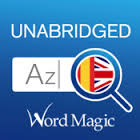 WordMagic Unabridged Spanish/English Dictionary: The unabridged Spanish/English dictionary by Word Magic is probably the best Spanish/English dictionary you can find for an application. It is also available on iOS and Android platforms. You can customize your search results to include/exclude various options. One of the options is to include images, another is to include the actual definition of the word you’re looking up, not just it’s equivalent in the other language. The dictionary is local, no internet connection needed. One drawback of this dictionary is that it will provide the user with the translation of a conjugated verb. The additional negative (probably the biggest negative) of this Spanish dictionary app is cost. At the time this blog post was published it was $24.99. We think it’s worth the money if you’re going to use it frequently. This app is loaded on my Apple devices – but not everyone will need the “industrial strength” solution that I need as a Spanish teacher. WordMagic Unabridged Spanish/English Dictionary: The unabridged Spanish/English dictionary by Word Magic is probably the best Spanish/English dictionary you can find for an application. It is also available on iOS and Android platforms. You can customize your search results to include/exclude various options. One of the options is to include images, another is to include the actual definition of the word you’re looking up, not just it’s equivalent in the other language. The dictionary is local, no internet connection needed. One drawback of this dictionary is that it will provide the user with the translation of a conjugated verb. The additional negative (probably the biggest negative) of this Spanish dictionary app is cost. At the time this blog post was published it was $24.99. We think it’s worth the money if you’re going to use it frequently. This app is loaded on my Apple devices – but not everyone will need the “industrial strength” solution that I need as a Spanish teacher. |
When are Spanish translator apps appropriate?
There was a time, during the infancy of translation software, that I would have never recommended a Spanish translator app for anyone at any time – they just weren’t accurate enough. However, the quality of translations has improved greatly over the years and Spanish translator apps are even adding contextual clues to their Spanish translations. The translator apps listed at the top of this post provide relatively solid translations for most requests.
Regardless of the improvements in translation quality, we still think that Spanish translator apps inhibit learning. Naturally then, if learning Spanish or teaching Spanish is your goal, our position is that a Spanish translator app is never appropriate. You could maybe justify using a Spanish translator app in certain circumstances for the sole purpose of checking your work and seeing if you’ve done it correctly. This use would be similar to referring to the answer key to check your work, however in most cases a Spanish translator app inhibits more learning than it promotes.
Therefore, we can only recommend Spanish translator apps in situations where learning is not the objective – simply getting through a conversation is the objective.
If learning Spanish is the goal, select a Spanish dictionary app that doesn’t translate for you – you’ll come out ahead in the long run!



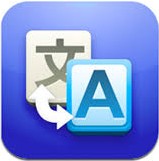

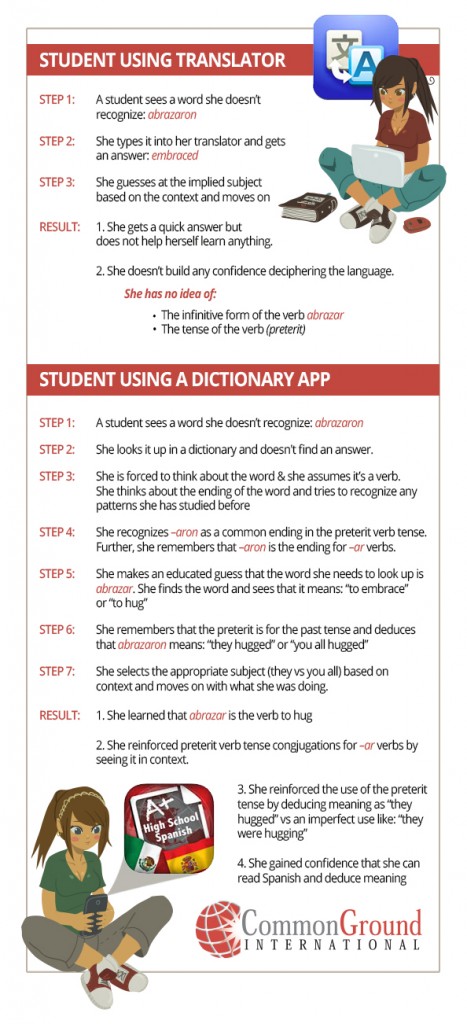
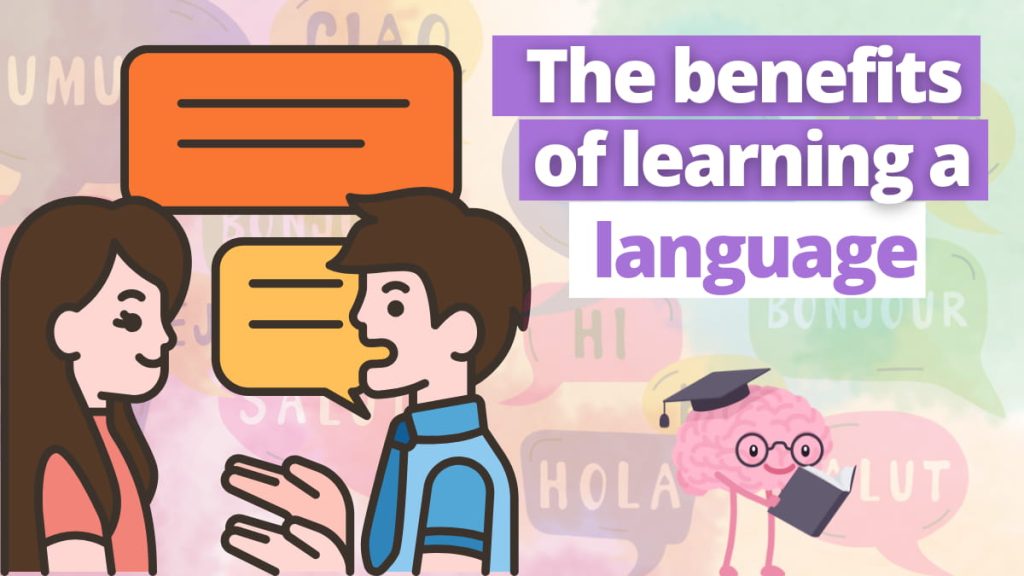
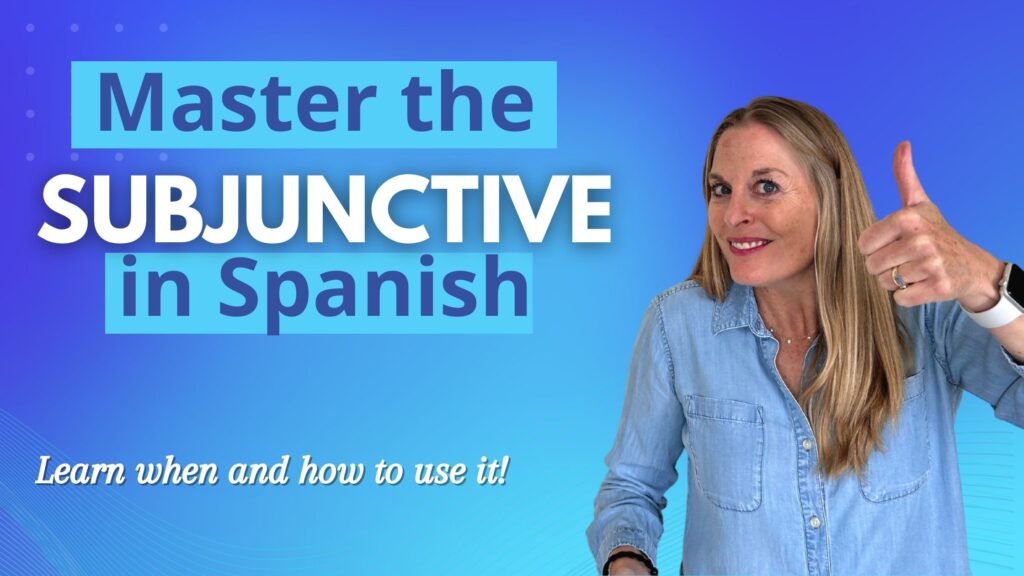
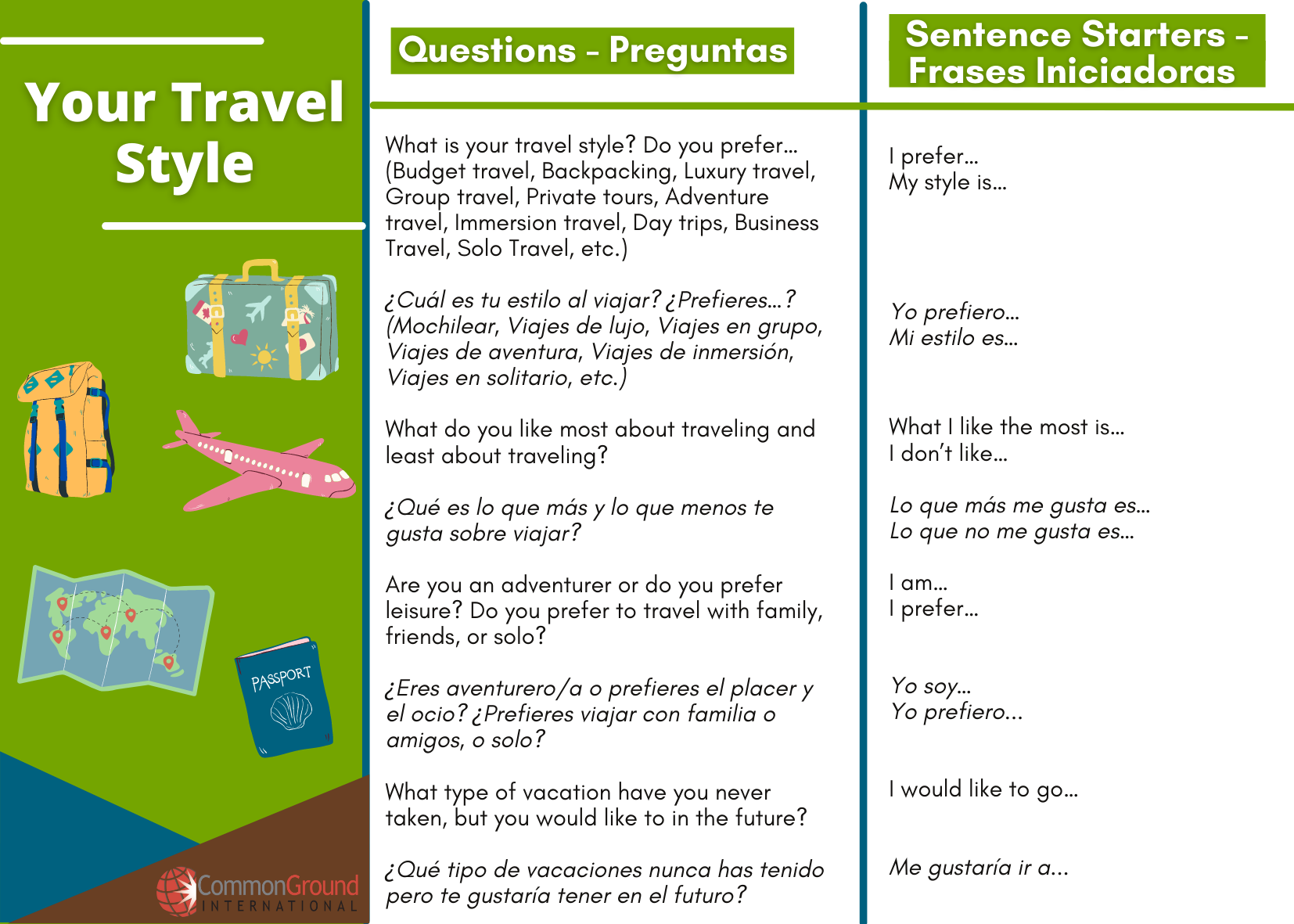
Thank you for clueing me in to the ” lack of learning” in a translation app. I’ll remove mine and just keep the dictionary.
Pingback: 4 Tips to study Medical Spanish - Learn Spanish on your own for free!